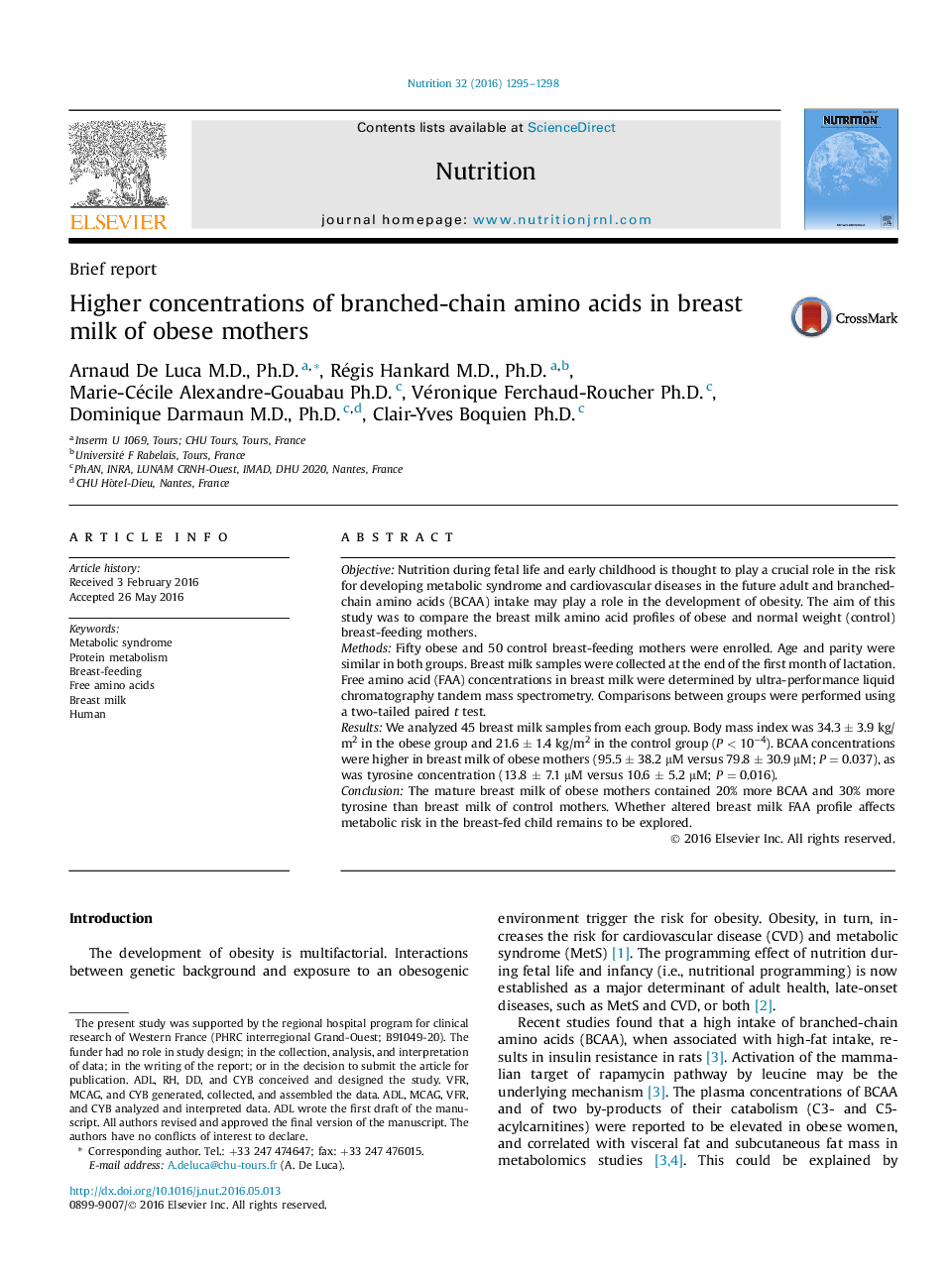| Article ID | Journal | Published Year | Pages | File Type |
|---|---|---|---|---|
| 3276081 | Nutrition | 2016 | 4 Pages |
•Obesity affects the composition of free amino acids in breast milk.•The concentration of branched-chain amino acids is higher in the breast milk of obese women.•Amino acid pattern in the milk of obese mothers is similar to that reported in plasma.
ObjectiveNutrition during fetal life and early childhood is thought to play a crucial role in the risk for developing metabolic syndrome and cardiovascular diseases in the future adult and branched-chain amino acids (BCAA) intake may play a role in the development of obesity. The aim of this study was to compare the breast milk amino acid profiles of obese and normal weight (control) breast-feeding mothers.MethodsFifty obese and 50 control breast-feeding mothers were enrolled. Age and parity were similar in both groups. Breast milk samples were collected at the end of the first month of lactation. Free amino acid (FAA) concentrations in breast milk were determined by ultra-performance liquid chromatography tandem mass spectrometry. Comparisons between groups were performed using a two-tailed paired t test.ResultsWe analyzed 45 breast milk samples from each group. Body mass index was 34.3 ± 3.9 kg/m2 in the obese group and 21.6 ± 1.4 kg/m2 in the control group (P < 10−4). BCAA concentrations were higher in breast milk of obese mothers (95.5 ± 38.2 μM versus 79.8 ± 30.9 μM; P = 0.037), as was tyrosine concentration (13.8 ± 7.1 μM versus 10.6 ± 5.2 μM; P = 0.016).ConclusionThe mature breast milk of obese mothers contained 20% more BCAA and 30% more tyrosine than breast milk of control mothers. Whether altered breast milk FAA profile affects metabolic risk in the breast-fed child remains to be explored.
